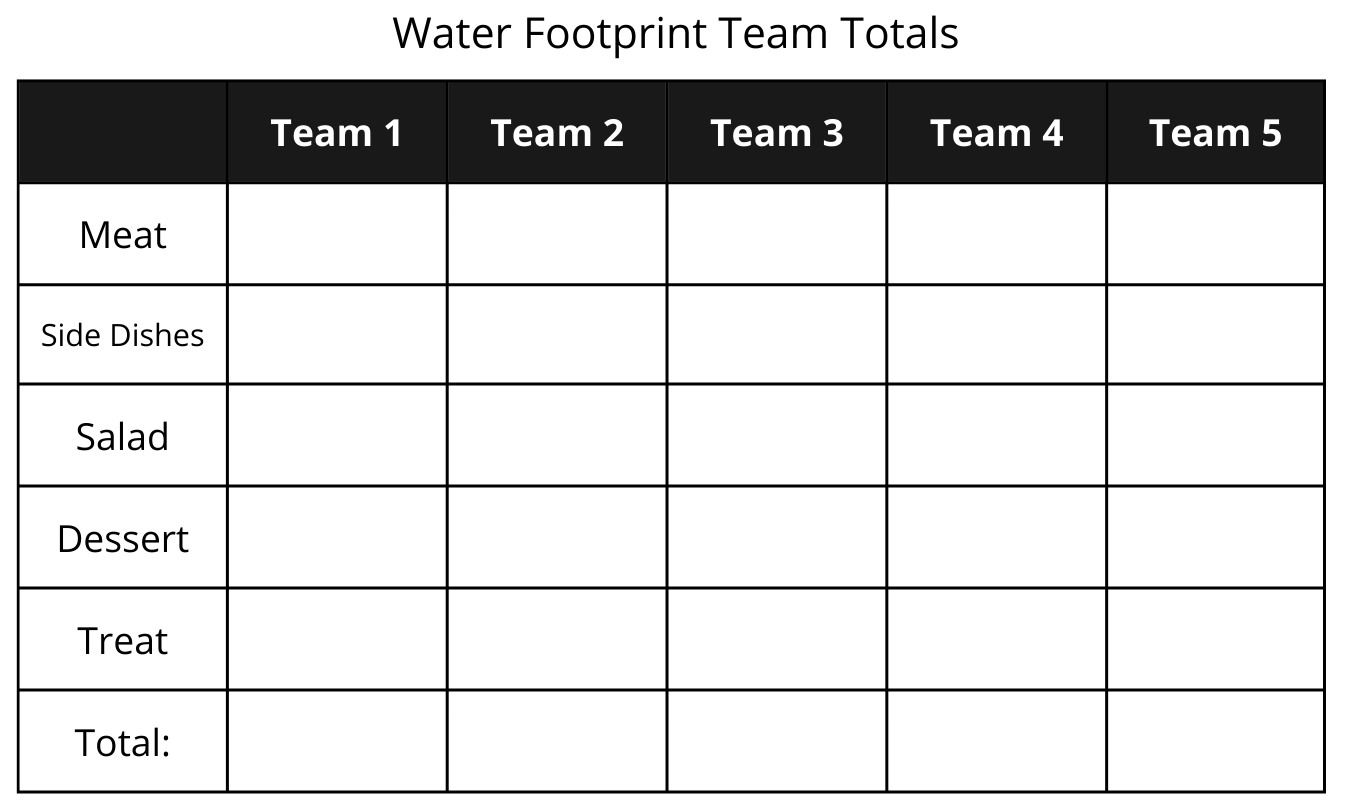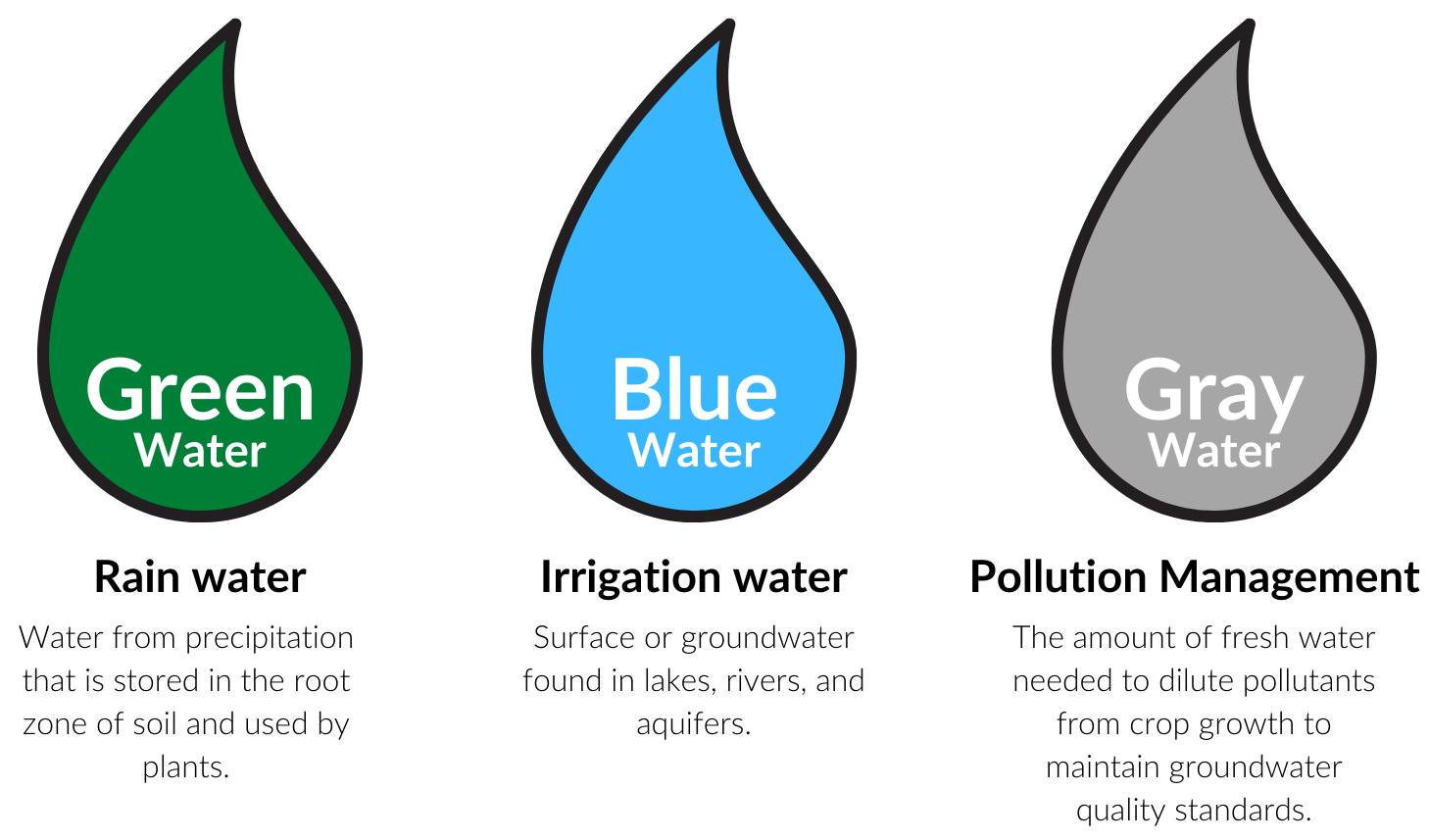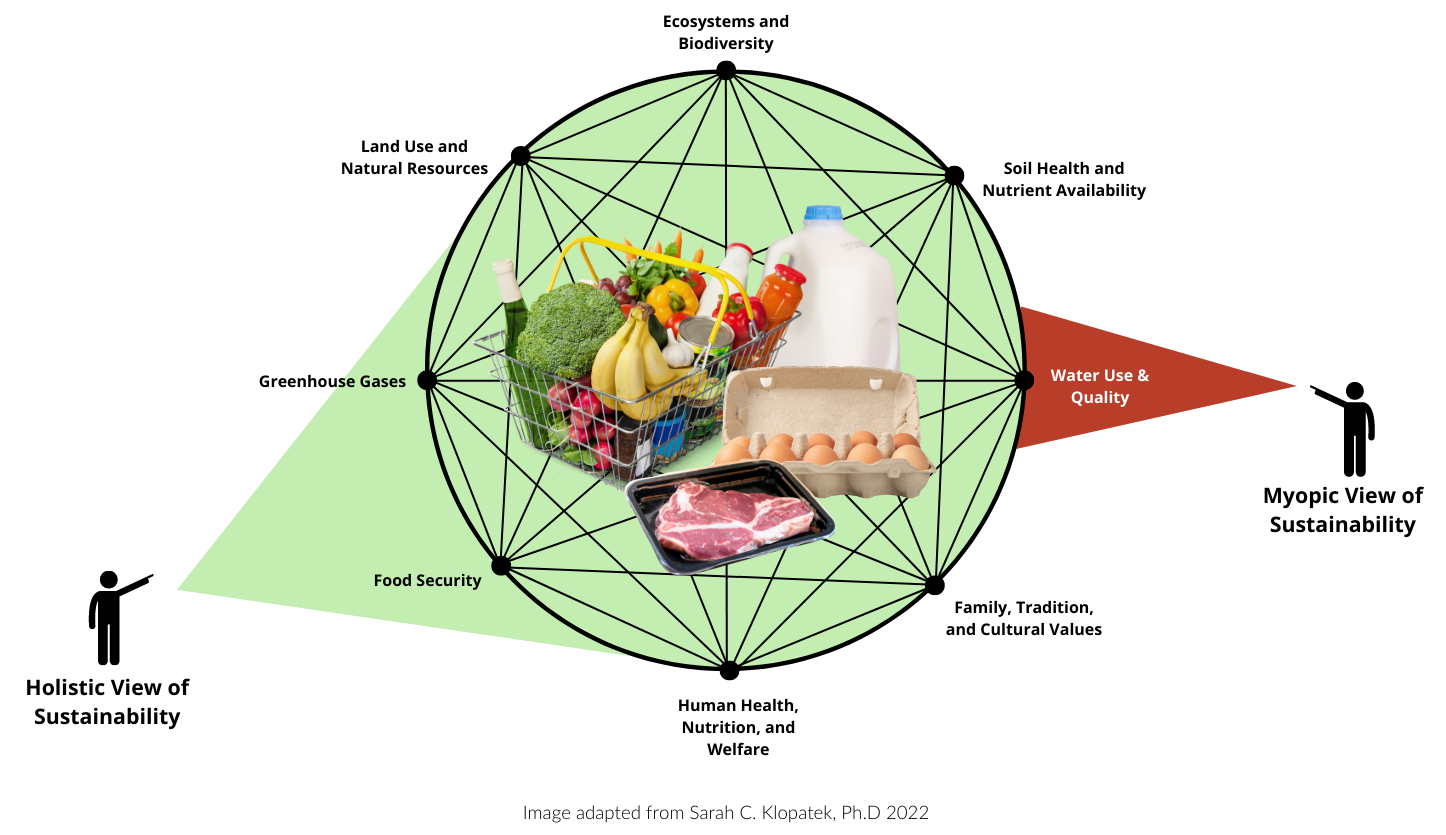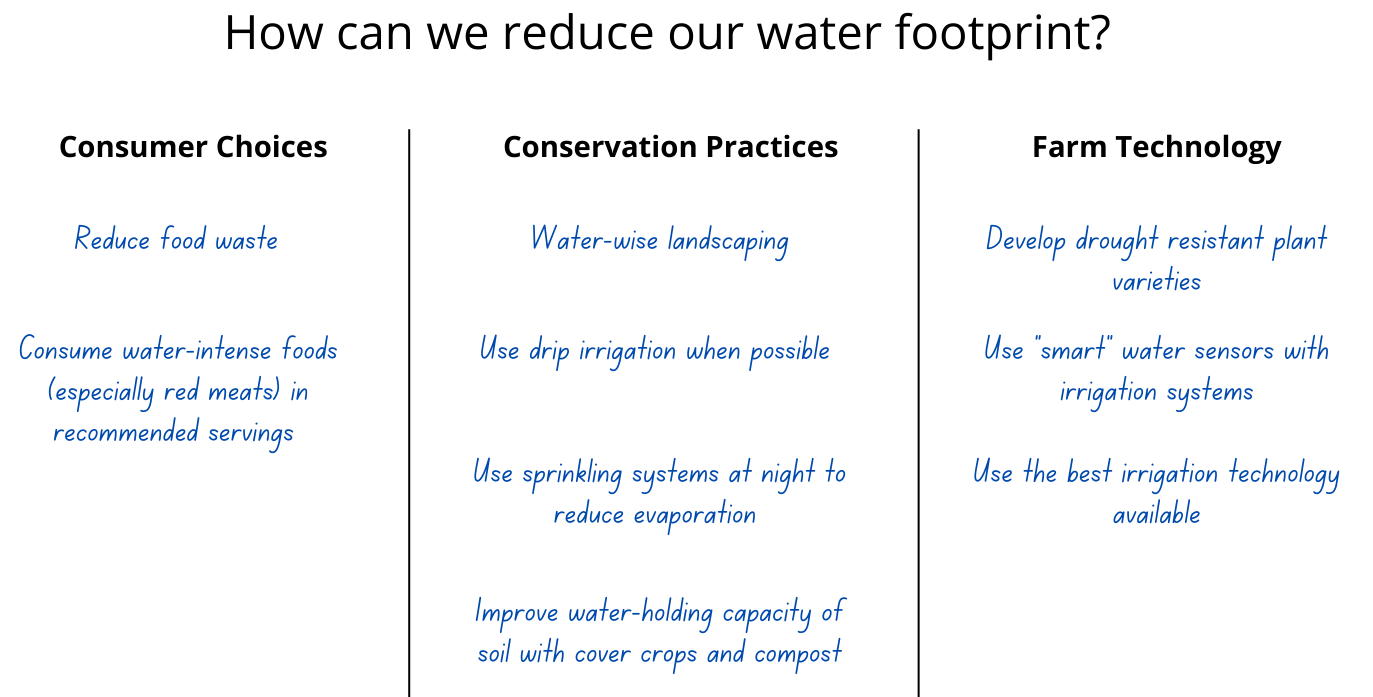The Water Footprint of Food
Explore concepts of sustainability by evaluating the water footprint (WF) of food. Students are introduced to irrigation practices throughout the world, consumptive and non-consumptive water use, and investigate the water requirements for various food crops.

Background
Lesson Activities
Recommended Companion Resources
Credits
Author
Andrea Gardner and Denise Stewardson | National Center for Agricultural Literacy (NCAL)
Acknowledgements
Dinner Party Menu Challenge in Activity 2 used with permission from Dr. Philip Chaney, Department of Geosciences, Auburn University. See the article in The Geography Teacher journal, An Active Exercise on Sustainability and the Water Footprint of Food: The Dinner Party Menu Challenge.
Sources
- https://www3.epa.gov/safewater/kids/waterfactsoflife.html
- https://www.ers.usda.gov/topics/farm-practices-management/irrigation-water-use/
- Anisfeld, S. C. 2010 . Water Resources. Washington, DC: Island Press
- Feldman, D. L. 2012. Water. Malden, MA: Polity Press.
- Yates, J. J. 2012. Abundance on trial: the cultural significance of “Sustainability.” The Hedgehog Review14 (2): 8-25
- Hoekstra, A. Y. 2013.The water footprint of modern consumer society. New York: Routledge
- Hoekstra A. Y., and M. M. Mekonnen. 2012. The water footprint of humanity. Proceeding of the National Academy of Sciences (PNAS)109 (9): 3232-3237
- Hoekstra, A. Y. 2003. Virtual water trade. In Proceedings of the International Expert Meeting on Virtual Water Trade, ed. A. Y. Hoekstra. Value of Water Research Report Series No. 12. UNESCO-IHE, Delft, The Netherlands
- Hoekstra, A.Y, A.K. Chapagain, M.M. Aldaya, and M.M. Mekonnen. 2011. The water footprint assessment manual. Washington D.C., USA: Earthscan
- Water Footprint Network. 2017a. Aims and History. http://waterfootprint.org/en/about-us/aims-history (accessed October03, 2017).
- https://ourworldindata.org/water-use-stress
- https://www.nass.usda.gov/Publications/Highlights/2019/2017Census_Irrigation_and_WaterManagement.pdf
- An Active Learning Exercise on Sustainability and the Water Footprint of Food: The Dinner Party Menu Challenge
Standards
Nebraska Content Area Standards
-
Earth and Space Science - 15.5 Sustainability
- SC.HS.15.5.C: Create a computational simulation to illustrate the relationships among management of natural resources, the sustainability of human populations, and biodiversity.
-
Life Science - 7.2 Interdependent Relationships in Ecosystems
- SC.HS.7.2.E (modified): Design, evaluate, and refine a solution for increasing the positive impacts of human activities on the environment and biodiversity.





